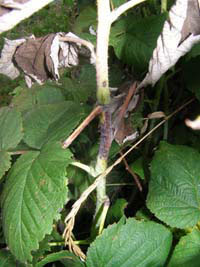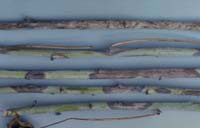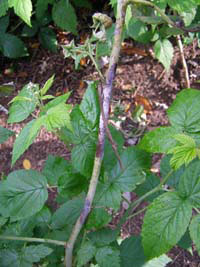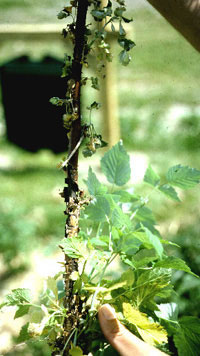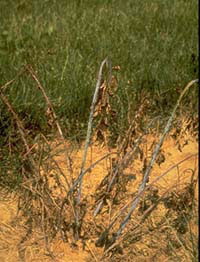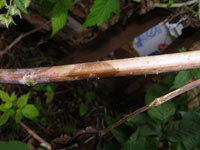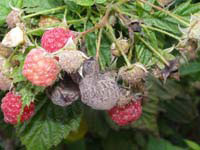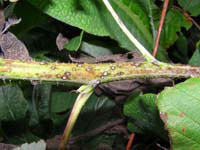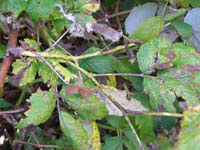Extension > Garden > Diagnose a problem > What's wrong with my plant? > Fruit > Raspberry > Dark spots or streaks on canes
Raspberry > Canes > Dark spots or streaks on canes
1 of 5
Spur Blight
Didymella applanata
- Brownish purple lesions enlarge into streaks and cover much of the cane
- Brown wedge-shaped area on leaves
- Chestnut brown to purple oval lesions on young green canes where the leaves attach
- Leaf and flower buds shrivel and die, and young fruit may fail to develop
- As diseased canes mature, the outer layer dries out and becomes silvery. Cracked, tiny black dots can be seen on the silvery epidermis
- More information on Spur Blight
2 of 5
Cane Blight
Leptospaeria coniothyrium
- Dark streaks on cane, always around a wound
- Shoots wilt and die as fruit develops
- More information on Cane Blight
3 of 5
Verticillium Wilt
Verticillium albo-atrum
- Canes turn blue or have blue streaks
- Leaves turn yellow and fall off from the bottom of the plant up
- Reddish brown streaks may be seen in the center of infected canes if bark is peeled away
- Black raspberries die in 1-3 years
- Red raspberries may survive many years but with reduced vigor
- More information on Verticillium Wilt
4 of 5
Gray Mold
Botrytis cinerea
- Light brown oval lesions form on canes where the leaves attach, and faded brown concentric circles are often visible within the lesion
- Flowers are brown to black and dry out
- Gray powdery spores cover part or all of the infected fruit under moist conditions
- Infected fruit may remain attached as shriveled, dried, black “mummies”
- Disease favored by wet conditions and temperatures between 41-86° F
- More information on Gray Mold
5 of 5
Anthracnose
Elsinoe veneta
- Small purple spots on young green canes (up to ¼ inch), and centers turn gray with age
- In late fall infected stems develop the characteristic hard and crusty “gray bark”
- Small spots (1/16 inch) on leaves, white to gray center with purple borders
- More information on Anthracnose



